On September 10, 2018, an important anthropologist died. Exactly 50 years earlier, Roy Wagner was a professor of mine in 1968, when I was attending Southern Illinois University in Carbondale. I took his course on the “Peoples of Oceania.”
Wagner was born on October 2, 1938, and died September 10, 2018, at his Charlottesville, Virginia home. I’m sorry I had not heard of his passing until now. His life intersected with mine at least at two points. At SIU, of course, and also in cryptozoology, years later.
After Wagner left SIU, and I did too, he went on to involve himself in a cryptozoological expedition to search for Merbeings in New Guinea. When I hear that, I often wondered if I piqued his interest in his course in *what* the indigenous folks had told him?

In 1982, Roy Wagner recounted the New Guinea descriptions of indigenous peoples’ Merbeing stories in the first issue of Cryptozoology. The next year, Wagner joined Cryptozoology editor Richard Greenwell on a small three-person expedition to New Guinea to investigate. There they heard that villagers at a hard-to-reach place called Nokon Bay spotted ri almost every day.
“Nokon Bay is about 1,500 feet wide, with reefs on both sides, the most turquoise-blue water I have ever seen, and a few thatched huts sprinkled along the shore,” said Greenwell. “If there weren’t mermaids here, I thought, there should be.” Sure enough, the local people told the monster hunters that they knew the creature—called an ilkai in that area—very well. The best times to spot it were dawn and dusk. The next day, the team was up with the sun at day- break, watching the water with binoculars. Junior Skeptic
Part of the graphic used in Junior Skeptic
In the Cryptozoology report, Wagner told of studying the culture of the local New Ireland, Papua New Guinea people from 1979 to 1980, when he discovered that they were aware of a scientifically unidentified marine mammal. People in Barok used the name pronounced “ah ree” for this animal. People in Susurunga used the name “ilkai.” These island fisher folk were aware of the other marine mammals and stated that the ri or ilkai was quite different than the dolphins, porpoises, pilot whales and dugongs, the latter known as bo narasi in Barok meaning “pig of the ocean” because of its plumb body, rounded whiskery face, and vegetarian eating habits.

(Richard Greenwell died on November 1, 2005, at the age of 63.)

The Chicago Tribune revisited these Roy Wagner-Richard Greenwell moments in 1985:
In July of 1983, off the coast of New Ireland, an island some 300 miles east of New Guinea, anthropologist Roy Wagner and colleague Richard Greenwell had a close encounter with a ri. Wagner had his camera cocked because natives of New Ireland had described the ri as an animal with a fishlike lower body and a humanlike head and upper body–in other words, a mermaid.
Wagner and Greenwell say they were able to maneuver their dinghy to within 50 feet of the ri, but at that point the creature dived and never reappeared. Wagner got photographs; murky, poorly focused ones that show the tail of an unidentifiable marine animal raised out of the water.

Markus Hemmler has noted that “Two years after 1983 another article followed. Thomas Williams and Co. wrote ‘Identification of the Ri through further fieldword in New Ireland, Papua New Guinea’ in Cryptozoology 4, 1985. Dugong dugong.”
So, Wagner died in 2018.

The Daily Progress, published a formal, local obituary of Roy Wagner on September 15, 2018.
Roy Wagner, 79, of Charlottesville, Va., died on Monday, September 10, 2018, at his home. Born October 2, 1938 in Cleveland, Ohio, he was the son of Richard Wagner and Florence Mueller. He was preceded in death by his brother-in-law Fred C. Elliott and friend Janice R. Wright. Roy Wagner received a B.A. in Medieval History from Harvard University (1961), and a Ph.D. in Anthropology from the University of Chicago (1966). He taught at Southern Illinois University and Northwestern University before accepting the chair of the Department of Anthropology at the University of Virginia where he taught Anthropology for 44 years until his passing. In his professional life, Professor Wagner specialized in symbolic anthropology, including indigenous conceptual systems involving kin relations, ritual, myth and worldview in Melanesia, Australia, and North America; pragmatics of cultural representation (imagery, writing, and speech) as a basis for symbolism; Shamanism and curing techniques exclusive of psychological, political, or ethnic perspectives; and studies involving the human element in technology and power concepts. Mr. Wagner also taught popular undergraduate courses in Fantasy and Social Values and the teaching of Don Juan as told by Carlos Castaneda. He was deeply loved by his students. He is best known for his seminal work, The Invention of Culture, which has been translated into eight languages and which is widely considered an important contribution to the development of the concept of cultural relativism. Mr. Wagner authored seven other books on symbolism and ethnography, and was also a gifted poet and devoted lover of cats. Professor Wagner is survived by his daughter Erika S. Wagner of Charlottesville, Virginia; son Jonathan R. Wagner of Buda, Texas; grandson Graham R. E. Wagner of Buda, Texas; sister Nancy Elliott of Yuma, Arizona; close friend Dawn Hayes of Charlottesville, Virginia; and his former wife Brenda S. Wagner of Troy, Virginia.
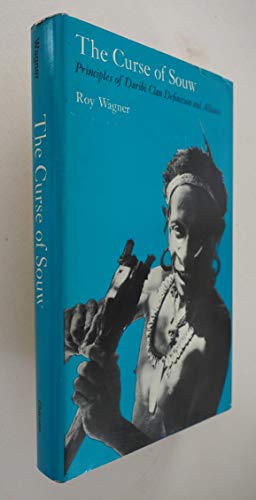
Anthropology News, April 16, 2019 (DOI: 10.1111/AN.1150), published an academic obituary by his student/colleague Ira Bashkow:
Roy Wagner, a visionary cultural anthropologist who inspired many with his intellectually adventuresome studies of kinship, ritual, myth, creativity, and symbolic power, died on September 10, 2018, at his home in Charlottesville, Virginia. His New Guinea research, wide reading, and lifelong interests in mathematics, astronomy, philosophy, classical music, and poetry were woven into many publications including The Invention of Culture (1975), Habu: The Innovation of Meaning in Daribi Religion (1972), Lethal Speech: Daribi Myth as Symbolic Obviation (1978), Asiwinarong: Ethos, Image, and Social Power among the Usen Barok of New Ireland (1986), Symbols That Stand for Themselves (1986), An Anthropology of the Subject: Holographic Worldview in New Guinea and Its Meaning and Significance for the World of Anthropology (2001), Coyote Anthropology (2010), and The Logic of Invention (2018).
Born in 1938, Wagner grew up in Cleveland, Ohio, where his father was a detective and city police chief. He majored in Medieval History at Harvard, then studied anthropology at the University of Chicago under David Schneider, receiving his PhD in 1966. He did fieldwork in the New Guinea Highlands among the Daribi of Mt. Karimui in 1963–1965, 1968–1969, and 2000; and in New Ireland among the Usen Barok in 1979–1980 and 1983. He taught at Southern Illinois University (1966–1968), Northwestern University (1968–1974), and at the University of Virginia (1974–2018).
Wagner’s first book, The Curse of Souw: Principles of Daribi Clan Definition and Alliance in New Guinea (1967), and his essay “Are There Social Groups in the New Guinea Highlands?” (1974), offered radical critiques of Africa-derived concepts which anthropologists had previously used to understand New Guinea kinship, establishing our current understanding that Melanesian kin groups are brought into being through creative acts like sharing and giving food.
Wagner’s later writings explore the manipulation of cultural symbols, with a focus on how adept individuals use symbols to generate social power in myth, magic, dream-visions, and ritual. He was fascinated by metaphor and how symbols substitute as readily for other symbols (and constellations of symbols) as they do for real things, collapsing the difference between reality and its representation and allowing meanings to proliferate in a limitless process of creative invention. Wagner developed a method of myth interpretation called “obviation,” in which he identified triangular constellations of symbols that both resemble and complement one another, then linked them in chains of substitution that unmask and extend the inventive meaning-making of the myth text itself.
Wagner loved exploring shifts of perspective involving transposition, projection, reflection, fractal recursivity, and figure-ground reversal. He also loved tricksters and was himself an intellectual trickster who reveled in transgressing beyond the boundaries of ordinary sense into a beguiling terrain of fantastic paradoxes, analytical knots, and shamanistic marvels that humble reason. For four decades at the University of Virginia he taught popular undergraduate courses about the works of Carlos Castaneda, Jorge Luis Borges, and Ursula LeGuin. He was teaching classes on “Fantasy and Social Values” and “Mythodology” at the time he passed away. He is sadly missed by generations of students, colleagues, and many readers worldwide.
++++
Cryptozoology, Anthropology, and SIU
I became a “cryptozoologist” in 1960, and every decision along my life’s path was usually based, in some fashion, with cryptozoology in mind. I picked the university I would attend, Southern Illinois University in Carbondale because I had read of the area’s “little red man” and small “swamp ape” (coined by me as “Northern American Apes” = napes). These reports from southern Illinois were noted in Ivan T. Sanderson’s Abominable Snowmen: Legend Come To Life (1961). Sanderson detailed the accounts were gathered by SIU folklorist John W. Allen.
Arriving at the campus in 1965, I found (by strange coincidence), I was assigned to live in the John W. Allen dormitory at Thompson’s Point, Carbondale. (By another weird coincidence, 50 years later, I realized I was directing the International Cryptozoology Museum at Thompson’s Point, Portland, Maine, since signing the lease for our best location yet, in 2015.)
I attended SIU-C, on campus, during the years 1965 through 1969, (during the Vietnam War era). Then did alternative service for two years in Illinois, I went on the road, traveling, living, chasing monsters, and writing in California and Massachusetts, all while finalizing my degree requirements, and obtaining a BA in anthropology in 1976.
Roy Wagner was one of the professors who touched my intellectual life at SIU.
From notes from the “Department History” on SIU-C’s “Anthropology” page I gained the following insights about other professors I recall from that time:
1957 - Creation of separate Department of Anthropology
1958-1963 – Walter W. Taylor (first full chair, founded MA and PhD programs)
Chairs of the Department of Anthropology, 1965-1969.
1963-1967 – Philip J.C. Dark
1967-1970 – Charles H. Lange
In 1955, sociocultural anthropologist Charles H. Lange and archaeologist Carroll L. Riley joined the soon-to-be SIU’s anthropology department. Riley had a deep influence on me. Riley’s course in “physical anthropology” was one of the earliest department selections I took, and he was often an informal or formal advisor to me. I decided to obtain a minor in Zoology based on my interest in animals, fossil hominoids, and cryptozoology. In Riley’s course, I did an in-depth paper on the “Survival of Neanderthal” in Eurasia, which had scores of references and a well-worked out line of evidence. (That is a paper, lost down through the years, if I ever returned, and is one I wish I could read today.)
In 1960, Philip J.C. Dark was added to the department, and I remember taking his “Primitive Art” course. I forever learned an appreciation of the incredible wealth of Benin art from Dark.

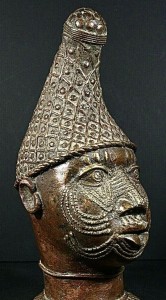
The department history summarizes the 1960s-1970s:
During the 1960s the department expanded, both in terms of its faculty and its physical space (movement from a former residential building on Mill Street to larger quarters in the basement of what is now Quigley Hall). In 1960 the department awarded its first M.A. degree; its first doctoral degree was bestowed in 1964, an occasion also marked by anthropologist Margaret Mead’s commencement address to the University. Several faculty additions were made to the Department in the 1960s, some of whom remained on the faculty for many years: cultural anthropologist Jerome Handler, linguist Joel Maring, Southeastern U.S. archaeologist Jon Muller and Maya archaeologist Robert L. Rands. Others were with the department for shorter intervals (e.g., the department’s first physical anthropologist, Roger Heglar; also Marie Doenges, Milton Altschuler, Adrian Gerbrands, Lee Guemple, Bruce MacLachlan, and Roy Wagner). Along with these additions came an expansion of geographical areas of faculty research and student training, with continuing work in Mexico, and the Southwestern U.S., and new projects in New Guinea, Eastern U.S., Ecuador, sub-Arctic, and the Maya area.
I took courses in ethnomusicology, archaeology, additional courses in physical anthropology, classes on individual groups of peoples around the world, linguistics, and more.
Milton Altschuler lived up to his name (“old school”) and allowed me to take an independent study with him. I surveyed the Human Relations Area Files, Inc. (the early paper catalogue of cross-indexed ethnographic data) for evidence of similar examples of tattoos in many cultures showing squatting people. I remember discovering they were hidden symbols of childbirth. Perhaps Altschuler published something on this?
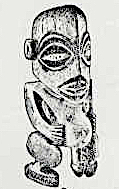
Altschuler also was involved in Mayan cultural development theory. As was Robert S. Rands, with whom I worked one summer preparing his Palenque shards.
As an anthropology major, I grew to know and had classes with Riley, Dark, Wagner, Guemple, Handler, Rands, and others (graduate students) I cannot remember. D. Lee Guemple (my first wife Toni was his graduate assistant) was the inspiration for our son’s first name, Desmond.
Walter Taylor retired in 1974 and Philip Dark retired in 1978. Carroll Riley retired in 1987, and Robert Rands in 1990; shortly thereafter Jerome Handler transferred to another academic unit in the College of Liberal Arts.
And at the trail’s end, they joined their ancestors.
In addition to the Wagner obituary items published above, please also see:




Philip J. C. Dark, 89, born May 15, 1918; died on April 4, 2008. Obituary.


Robert L. Rands, 88, born May 13, 1922; died on July 24, 2010; obituary (mine, and SIU-C’s edited version)
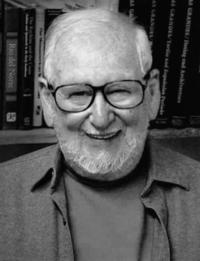



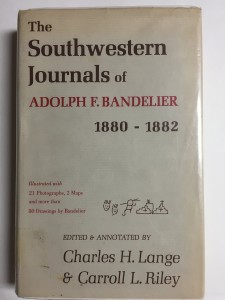

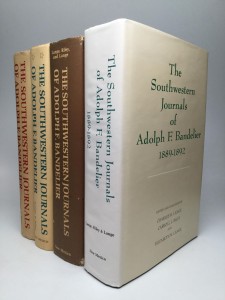

Carroll L. Riley, 93 years and 11 months old, born April 18, 1923; died March 25, 2017. Obituary.
+++
Support the International Cryptozoology Museum by
(1) donating,
(2) shopping at the CryptoStore,
(2) becoming a member,
and
(3) visiting.
Thank you.

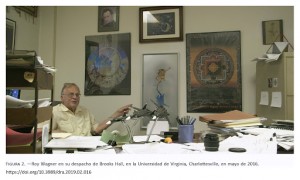

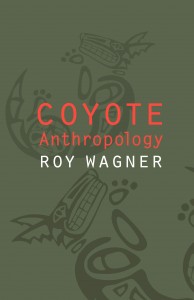
[...] Source [...]
A true legend.